
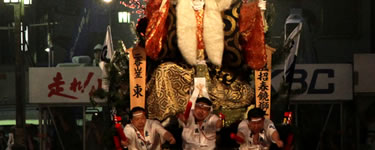
山笠/博多の見物スポット
YAMAKASA SIGHTSEEING SPOT
Hakata Dontaku Report
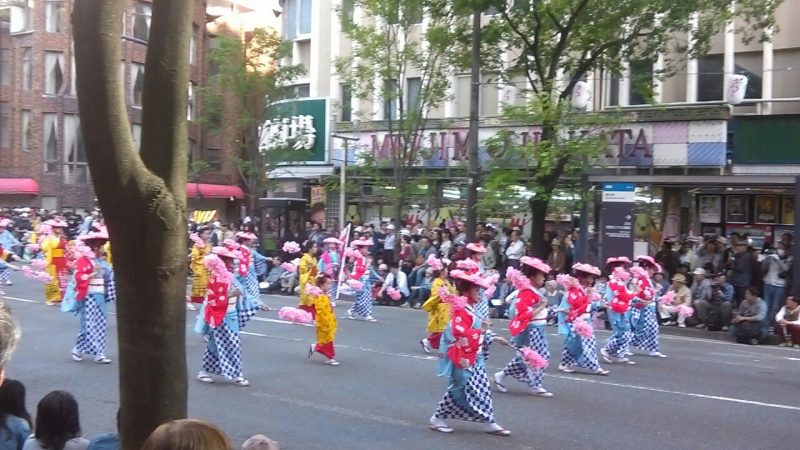
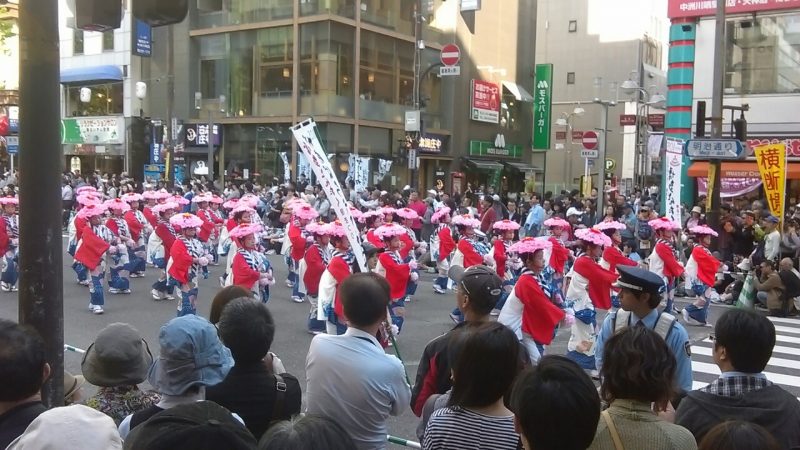
The Hakata Dontaku is a festival, held in Fukuoka during the 3rd and 4th of May every year.
The festivities start out at the Kushida-shrine, which also plays an important role during the Hakata-Gion-Yamakasa festival. Each of Hakatas districts is represented by men from that district in their own traditional wear.
After the beginning ritual, starting 8:30 in the morning, at the Kushida-shrine, the participating men walk in the direction of Tenjin and carry with them small shrines on wheelbarrows.
The main parade begins at 1 o’clock in the afternoon. Here the participants start near Gofukumachi-Station and walk along a set path along the Meiji-doori street to the Tenjin central park. Each district is represented by a masked figure on horseback with large umbrella like decorative symbols carried after them.
The parade stops at several stands at the roadside, where they are often given free drinks and snacks or handed other presents by companies or street vendors of Fukuoka. Because of this the whole parade is rather slow and it is possible to walk along side the spectators to keep up with the districts participants. Some participants also hand out small keepsakes such as a stylised fishing rod with a small plastic carp on the end. significantly larger keepsakes are given to the representatives of Fukuokas companies, that stand along the side and make financial contributions to each district.
After all seven of Fukuokas districts have made their way along the over one kilometre long festival path, known as Dontaku Hiroba, several marching bands and other parade teams from all of Kyushu start walking along the Dontaku Hiroba. There follow a lot of parade groups including groups from other Japanese cities and representative groups from nearby countries such as Thailand, Korea and Malaysia, the first day of the Dontaku festival finishes at 6:30 in the evening.
The second day of the Dontaku festival begins at three o’clock in the afternoon with a fanfare opening procession. This day there are noticeably more processions of women with flower inspired hats dancing often with a pair of wooden rice spoons called, Shamoji. This is inspired by the notion of a housewife spontaneously coming out of the house and joining the parade, using what she has at hand. The processions are over at around 7 o’clock and the last elements of the festival are a traditional dance, in which everyone can join in and the traditional song of Hakata, the “Iwaimedeta”, that is sung along the whole festival course at the end. A schedule of the processions is released in advance by the organisation of the festival. A good point to go to before the parade has started is the Reisen-park just north of the Kushida-shrine since there the groups of the parade assemble before going a bit further north and joining the procession.
Report:
While on the first day a large part of the later processions were canceled due to heavy rain, the districts participants still did their traditional march along the Meiji-doori covered in raincoats and under umbrellas. The traditional masked riders and other decorative elements were covered in see-through plastic coatings which didn’t make for the best fotos.
However I still got to enjoy the shows of some of Fukuokas clubs, that use the chance, that the audience of the festival presents, and do performances all around Fukuoka on mostly roofed stages. Local dance, theatre, drumming and other clubs performed on a stage at the Kushida-shrine, an important point in most of Hakatas festivities. Also some of the procession groups gave performances before the parade and also after it had been canceled.

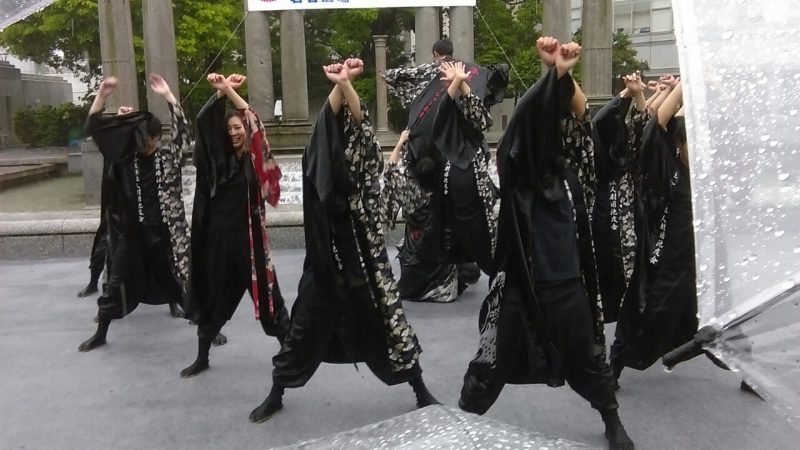
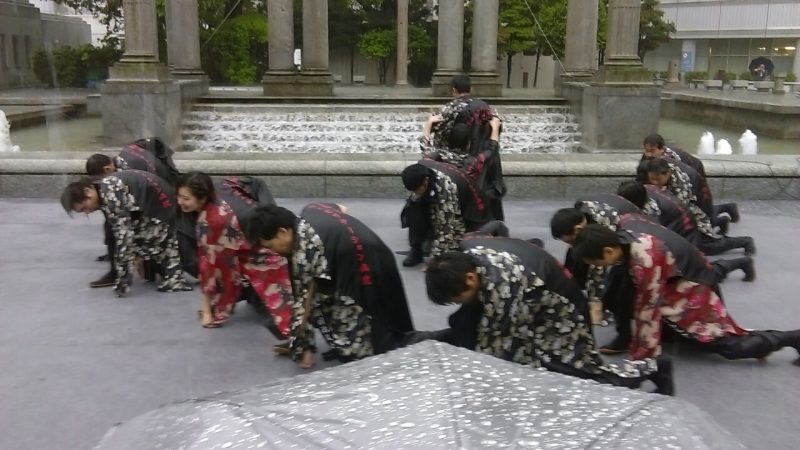
On the second day I got to experience the full grandeur of the festival. There were far more spectators than the day before and the parade was in full swing this time. The opening procession was pompous with the mayor of Fukuoka driving with them in a car. Directly after that there came a Disney parade and it was shocking to see just how popular disney is in Japan. There followed a larger procession of women in colourful Kimonos wearing flower like hats and dancing to traditional music. Several schools were also represented with children of all ages walking along in their uniforms.
At around 5 o’clock there was an unusual mix of processions close after each other with a group of people in blue costumes in point hats, a group carrying a fake dragon as also seen during Chinese new year, a small Bolivian music group and a cosplay parade. I later found out this was part of the General Dontaku Procession, where many different groups are allowed to join. There followed another group of dancing ladies in Kimonos, that soon organised a public traditional dance, which consisted of people walking at a certain pace in a circle while doing certain arm movements and getting slower in regular intervals. It was not hard to follow and after a bit of watching in also joined in for two or three rounds. The festival ended with the traditional song of Hakata, the Iwaimedeta, and the Hakata-Teippon, a certain clapping rhythm specific to Hakata, that consists of two double claps and a Triple clap. The Hakata-Teippon is used by the people of Hakata whenever a task is finished or something comes to and end and thus gives a fitting end to the Hakata Dontaku festival.
Sight seeing spot
Gourmet spot




